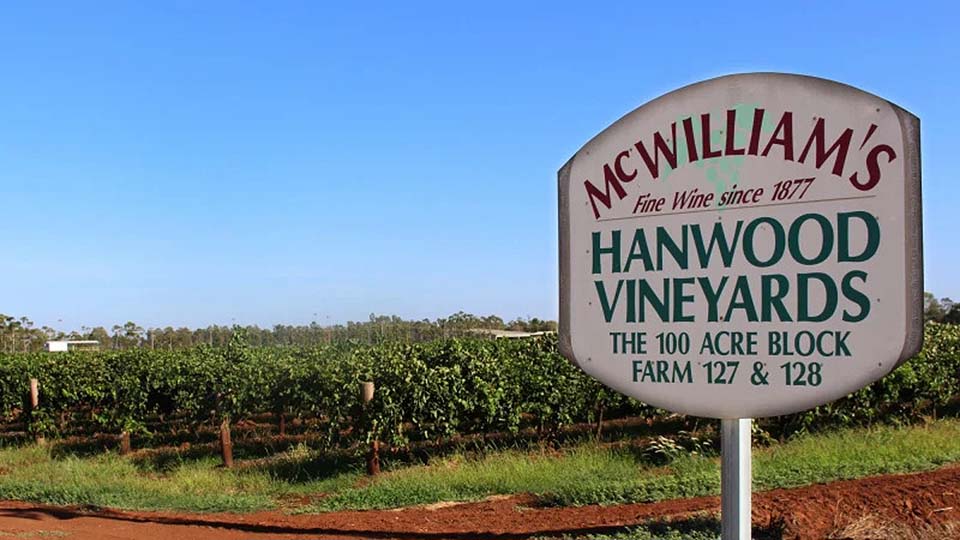
If you wander through the wine section of a local supermarket, you could be forgiven for assuming that the only two white wine grapes on Planet Earth are Chardonnay and Sauvignon Blanc. The other day, I went to search for something to go with lightly fried pieces of cod fillet in a herb sauce, accompanied by those lovely little Kipfler potatoes. They’re wonderful when deep-fried, provided that you boil them first then leave them in the fridge for a few days to dry out. Anyway, something white, dry and interesting was required, such as a crisp Italian Frascati or a Soave. I traipsed around the wine shelves of the shop in increasing desperation because while there were Chardonnays and Sauvignon Blancs by the truck-load there was precious little else.
There was not a Riesling in sight; not a Viognier to be seen and not a trace of a Chenin Blanc. There wasn’t a single bottle of Soave, Orvieto, Frascati or Verdicchio and the white wines of France and Spain were conspicuously absent. In desperation I chose a bottle of young Pinot Grigio from the McWilliam’s Winery in New South Wales on the grounds that I’d not seen this brand before around here. Perhaps you’ve tasted Pinot Grigio before (often known in the wine trade simply as “P.G.”) but if you’re unfamiliar with it, allow me to give you a few tips.
In France where the grape originated, it’s known as Pinot Gris (PEE-noh GREE). The name “pinot” comes from “pine” because the bunches of grapes are thought to resemble small pine cones and the word “gris” is the French word for grey, referring to the pinkish-grey colour of the skins.
Across the border in Italy, the exact same grape is known as Pinot Grigio (PEE-noh GREE-joh). However, there’s an enormous difference in taste, character and style, depending on where they are made and whether the name is shown in French or Italian.
The wine makers from the Alsace region of France traditionally turn their Pinot Gris grapes into full-bodied wines with luscious fruitiness and a rich silky texture. They sometimes carry hints of ginger or buttery flavours. Italian wine-makers on the other hand make their Pinot Grigio into a crisp, dry wine with a clean profile of apple and pear and sometimes a rather sharp finish. In other parts of the world, most wine makers tend to follow the fashionable Italian style though there are exceptions.
Generally speaking, if the wine is labeled Pinot Grigio it usually indicates the Italian crisp dry style, whereas wine labeled Pinot Gris tends to be similar in style to that of Alsace. It boils down to this: if you want something fresh, dry light and vivacious, look for Pinot Grigio but if you prefer something fruitier and softer, search for Pinot Gris.
Although Pinot Gris from Alsace has ageing potential, it’s an exception. Don’t forget that nearly all the table wines in the world are intended for early consumption and should be used within three years of manufacture. This is easy to work out if there is a year shown on the label, but many cheap wines are non-vintage so you need to be careful. It’s invariably safer to buy from a popular shop which seems to have a rapid turnover of stock.
Both these Pinots are immensely food-friendly. The lighter Pinot Grigio makes a refreshing apéritif and goes well with prawns, fish or light appetizers. The richer Pinot Gris style works well with veal, roast pork and chicken casseroles as well as hard cheese. Both are especially welcome on a warm summer evening.
McWilliam’s Pinot Grigio 2020 (white) Australia. Bt 399 @ Friendship
In1877 Samuel McWilliam planted his first grape vines in New South Wales and forty years later J. J. McWilliam (known to his friends simply as J.J.) planted the famous Hanwood vineyard. The company has been exporting wine overseas since 1935 and this year was acquired by Calabria Family Wines.
This entry-level Pinot Grigio is almost completely colorless and just the faintest hint of gold where it catches the light. There’s a delicate and quite subtle aroma of fresh pear and green apple. It has a delightfully perfumed taste and there’s plenty of clean, sharp fruit on the palate. It’s a crisp and dry wine at a pleasingly low 11.5% ABV but there’s a good balance of acidity to give the mouth-feel a bit of liveliness. It has a long, satisfying finish too, in which the crisp fruit lingers on. The style is more old-world Italian than Alsatian (hence the Italian name) but the perfumed aroma and taste sets it apart.
To my mind, the wine would make an excellent partner for a wide range of dishes apart from the obvious fish and chicken. It made an excellent partner for the meal of cod in sauce but it would also go well with simple veggie fare, omelets, salads or quiche. You’ll need to serve it pretty cold – straight out of the fridge will do because it will rapidly warm up and the aromas will appear more gradually. Of course, this is a basic wine, for at this price you cannot expect anything else. The important thing is that it’s “real” wine, even though the price is about the same as locally produced fruit wine.
 |
 |
 |





